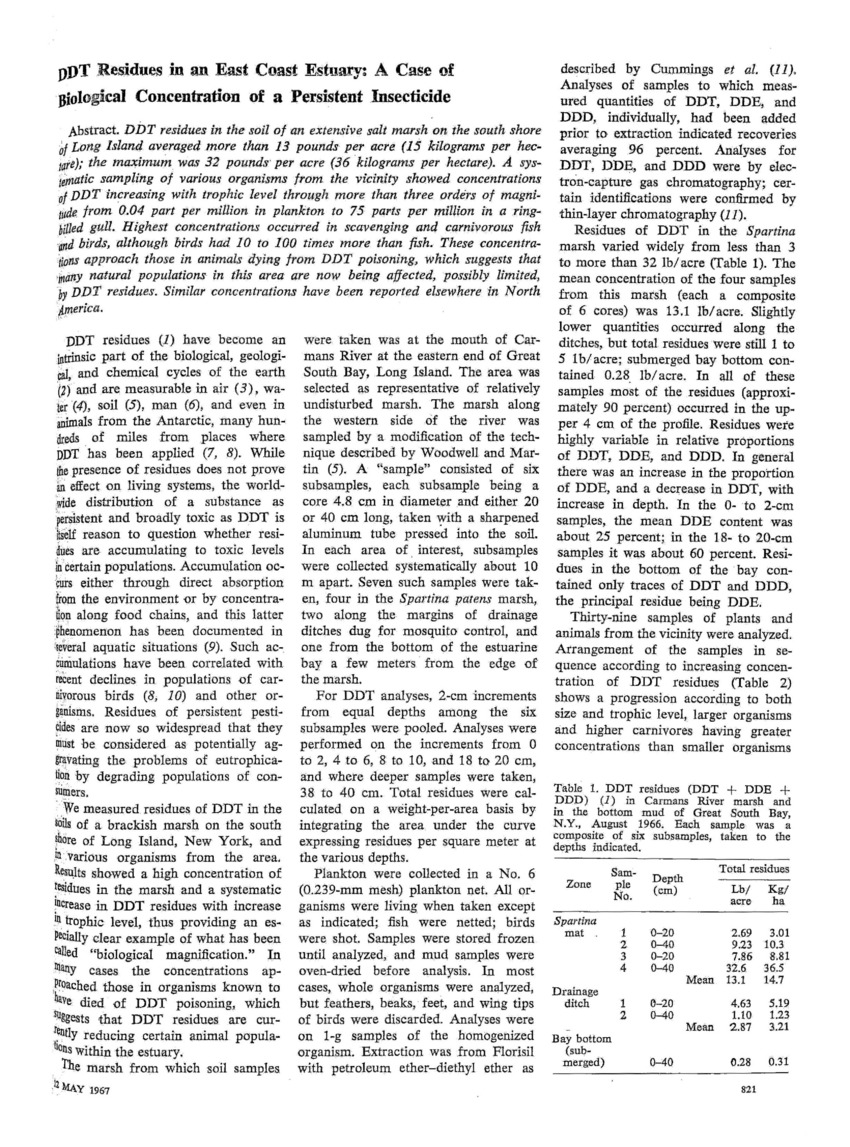Journal Article
AccessDDT Residues in an East Coast Estuary: A Case of Biological Concentration of a Persistent Insecticide
DDT residues in the soil of an extensive salt marsh on the south shore of Long Island averaged more than 13 pounds per acre (15 kilograms per hectare); the maximum was 32 pounds per acre (36 kilograms per hectare). A systematic sampling of various organisms from the vicinity showed concentrations of DDT increasing with trophic level through more than three orders of magnitude from 0.04 part per million in plankton to 75 parts per million in a ring-billed gull. Highest concentrations occurred in scavenging and carnivorous fish and birds, although birds had 10 to 100 times more than fish. These concentrations approach those in animals dying from DDT poisoning, which suggests that many natural populations in this area are now being affected, possibly limited, by DDT residues. Similar concentrations have been reported elsewhere in North America.
Publisher - American Association for the Advancement of Science (AAAS)
Subjects - Chemical, Dichlorodiphenyltrichloroethane, DDT; Insecticide
Citation: Woodwell GM, Wurster Jr. CF, Isaacson PA. 1967. DDT Residues in an East Coast Estuary: A Case of Biological Concentration of a Persistent Insecticide. Science; 156(3776):821-824 http://dx.doi.org/10.1126/science.156.3776.821
